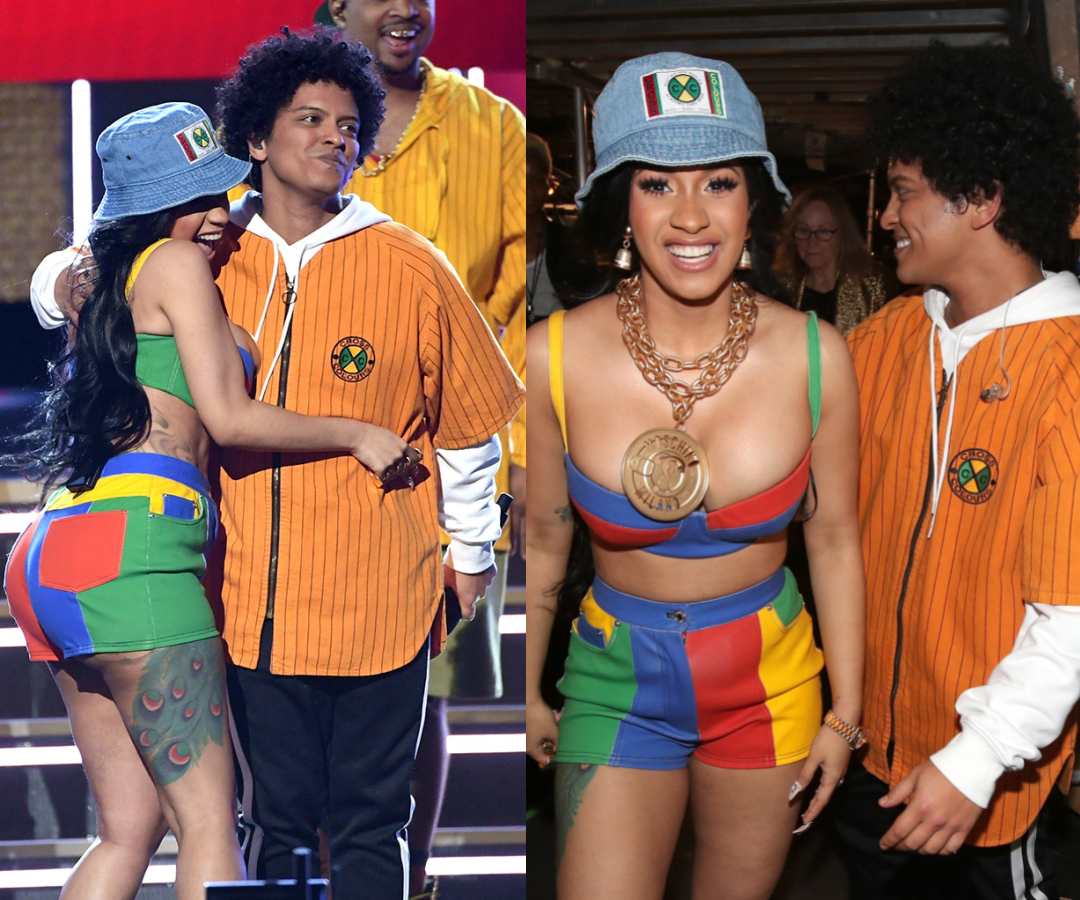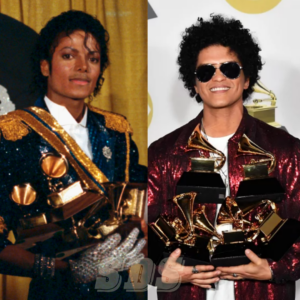When Bruno Mars released “Finesse” as the third single off his smash-hit 2016 album 24K Magic, few could have predicted it would become one of the biggest songs in the world. With its infectious throwback vibes, slick music video homage, and Mars’ undeniable charisma, “Finesse” rode a wave of nostalgia and innovation straight to the top of the charts. Years later, it remains a cultural force and Mars’ biggest hit to date. What is it about this funky jam that made it so unstoppable? Let’s break down the key ingredients behind “Finesse” and its meteoric rise.

A Masterclass in Revivalism
Though “Finesse” sounds fresh, its sound is rooted in the New Jack Swing genre popularized in the 80s/90s by pioneers like Teddy Riley. Mars and his production team channeled forefathers like Bobby Brown and Bell Biv DeVoe, updating the groovy R&B/hip-hop fusion with modern sheen. By blending analog textures with electronic flourishes, “Finesse” at once pays homage to the past while pushing pop forward. It’s revivalist without being reductive, balancing nostalgia with innovation.
Mars’ talent for musical mimicry is key. His vocals shape-shift across eras with ease; on “Finesse” he channels the crisp, digitized New Jack Swing delivery to a tee. His chameleon-like ability to inhabit different musical spaces grants the song an authenticity that resonates across generations. While revivalism often feels like trend-chasing, Mars makes it feel lived-in. “Finesse” is the work of an artist with not just technical chops but deep understanding and reverence for his musical ancestors.
This masterful fusion of past and present created wide commercial appeal. For longtime Mars fans and R&B historians, “Finesse” offered a portal back to beloved eras. For younger mainstream audiences, it served as an exciting introduction to oft-overlooked influences. By blending these worlds, Mars created a song with magnetic cross-generational pull.
Infectious Joy & Crossover Appeal
Beyond the technical aspects, much of “Finesse”’s success stems from its overflowing joie de vivre. With its punchy horns, bouncing beat, and Mars’ energetic ad-libs, the song radiates playful confidence perfect for dancing or just boosting moods. Despite touches of lyrical swagger, Mars’ presence remains inviting; when he beckons “Show me what you got” it feels like an open invitation to listeners.
Stacked alongside party-starters like “24K Magic” and “That’s What I Like”, “Finesse” fit seamlessly into the escapist fantasy 24K Magic offered. After years honing his showmanship, Mars knew this album’s mission was spreading infectious joy.
That sense of fun translated across genres, which helped “Finesse” crossover from R&B/Hip-Hop to Pop and beyond. Though complex behind the scenes, its old-school swing sounds breezy and immediate. Like Amy Winehouse’s back-to-basics soul throwbacks, “Finesse” makes intricate craft feel loose and casual. Its populist sound made the song ripe for remixing, which helped fuel its rise.
Strategic Collaborations
Early on Mars tapped rapper Kodak Black for a guest verse on “Finesse.” The feature introduced Mars to hip-hop audiences, establishing his New Jack Swing credentials via co-sign. This collaborative spirit extended as Mars invited Cardi B for the song’s official remix released in January 2018.
The Cardi B assisted remix proved hugely successful, granting “Finesse” new relevance over a year after the original release. Beyond a spike in streams, Cardi’s feature brought radio play across Rhythmic and Urban Contemporary formats. In February 2018, the “Finesse (Remix)” hit #1 on Billboard’s Rhythmic Songs chart while the original re-entered at #11 – a testament to Mars’ strategic bridge-building between genres.
And bridge-building was crucial for Mars by this point. Some critics accused the singer of appropriating and watering down Black music traditions for pop consumption – critiques that flared up especially around 24K Magic and its shameless retro leanings. Collaborating with Black artists like Kodak and Cardi helped legitimize Mars’ throwback mission and defuse accusations of cultural theft. It also expanded his music’s reach enormously – a win/win.
Between the original and remix, “Finesse” dominated airwaves for over two years thanks to Mars’ collaborative spirit.
A Music Video Love Letter
While sonic details primed “Finesse” for success, its blockbuster music video catapulted it into the cultural stratosphere. Directed by Mars and frequent collaborator Cameron Duddy, the clip pays homage to iconic 90s visuals with sleek recreation and tongue-in-cheek references.
The video amplified the song’s nostalgia while demonstrating Mars’ studious dedication to nailing 90s Black culture. Seeing him casually hit the running man in a Cross Colours hoodie made Mars seem less like a cultural tourist and more like a devoted fan. Sharing knowledge of these touchstones endeared him to Black audiences and let them in on the joke.
Packed with charm and personality, the “Finesse” video became a sensation – inspiring memes, reaction videos, and the #FinesseChallenge dance trend. Beyond reminiscing, it invited active participation from fans. The video arrived precisely when 90s obsession peaked in mainstream culture, making Mars seem like a soothsaying trendsetter versus bandwagon jumper.
Ultimately the visual’s meticulous recreation made it a love letter versus lazy nostalgia cash-grab – a distinction that helped cement the song’s viral staying power.
Chart Domination & Critical Acclaim
Given the song’s cultural saturation, it’s no surprise “Finesse” dominated charts internationally. It topped the Billboard Hot 100 for four straight weeks and the US R&B chart for fourteen. The track stayed in the Hot 100 for a staggering 59 weeks, breaking into 2018’s year-end top ten. Globally “Finesse” reached #1 in Canada, France, New Zealand, and Switzerland; the top 5 in Australia, Ireland, Norway, Sweden, and the UK. By 2019 it was certified 5x platinum in the US and Australia – a bonafide smash.
These numbers were bolstered by the song’s Grammy success. “Finesse” took home the 2019 Grammy for Best R&B Performance, while 24K Magic won Album of the Year. Mars made history as the first artist in over two decades to win the big four general field categories over his career. Suddenly the critically doubted revivalist had entered the prestige conversation.
While some music journalists argue Mars’ throwback approach lacks innovation, his songcraft remains undisputed. “Finesse” distills his strengths – musicianship, charisma, attention to detail – into one charming package. By uniting Black music loyalists, pop culture vultures, 90s kids and more, he underscored his unique crossover appeal.
Cementing Bruno Mars’ Icon Status
Looking back, “Finesse” and its world-conquering run cement Bruno Mars’ status as a definitive pop icon. Though he’d already dominated radio for years, “Finesse” represented a new peak – crystallizing his musicality, vision, and magnetism. It expanded his artistry into fresh terrain without losing the core facets fans adored.
Ultimately “Finesse” fulfilled Mars’ career-long mission: updating classic sounds/eras for modern audiences while retaining their spirit and verve. Rather than coasting on empty nostalgia he breathed new life into beloved influences. Like Amy Winehouse and Mark Ronson’s work, Mars’ revivalism introduced overlooked gems to younger generations. His clear study and reverence communicate these aren’t cheap aesthetic flings but rather traditions he hopes to sustain.
Even if Mars doesn’t get credit as an innovator, his curatorial skill remains unmatched in pop currently. “Finesse” stands as both love letter and masterclass in how to honor the past powerfully. After this song captivated the globe, Mars graduated from chart mainstay into a rarefied class of icons who define eras. Surely even the legendary acts he pays tribute to would be proud to call him a spiritual successor.
Five years later “Finesse” still feels fresh and timely – a testament to flawless craft. Mars continues ascending into rarified “King of Pop” air; this song laid crucial groundwork cementing his crossover appeal. Though he’s topped charts before and since, “Finesse” remains Mars’ career-defining smash – the song that turned early fans into lifers while winning over more skeptical audiences. It serves as both culmination and level jump – the smash that unlocked Bruno Mars’ full finesse powers.
News
Bruno Mars first appeared after suspicion of losing $50 million in gambling debt: Extremely depressed, in tears during the show in Thailand
On the evening of March 30, Bruno Mars held a large-scale live concert in Bangkok (Thailand). Bruno Mars visited Thailand over two weekends (March 30 and 31) as part of a series of live concerts held by male artists in…
The Mars Effect: Speculating on Bruno Mars’ Potential Genre Choices for a Jump to the Big Screen
Bruno Mars has become one of the most successful pop stars of the 21st century, with his soulful voice, retro style, and dynamic stage presence charming audiences around the world. Though he has primarily focused on his music career, Mars’…
From Struggling Artist to Superstar: How Bruno Mars’s Journey Teaches Us the Power of Perseverance and Self-Belief
Bruno Mars has become one of the biggest pop stars on the planet, churning out hit after hit and selling out arenas around the world. However, his path to stardom was filled with struggles and setbacks that would have derailed…
From Thriller to Treasure: Bruno Mars’ Surprising Takeaways from Michael Jackson
In the realm of music, certain artists etch their names into the annals of history not just for their talent but also for the profound impact they have on subsequent generations. Michael Jackson, the King of Pop, undoubtedly stands as…
Exploring the Explosive Bromance: Bruno Mars’s Best Friendship Lyrics Unveiled!
In the realm of music, where emotions flow freely and sentiments are expressed in melodies, Bruno Mars stands out as a maestro of capturing the essence of human connections. While he’s renowned for his romantic ballads and infectious beats, Mars…
The Surprising Rise of Bruno Mars: Unpacking His Evolution with Award-Winning Milestones
Bruno Mars has become one of the most successful pop stars of the 21st century, blending elements of pop, R&B, funk, and soul into his infectiously catchy songs. Mars’ trophy cabinet traces an impressive evolution from behind-the-scenes songwriter to global…
End of content
No more pages to load











